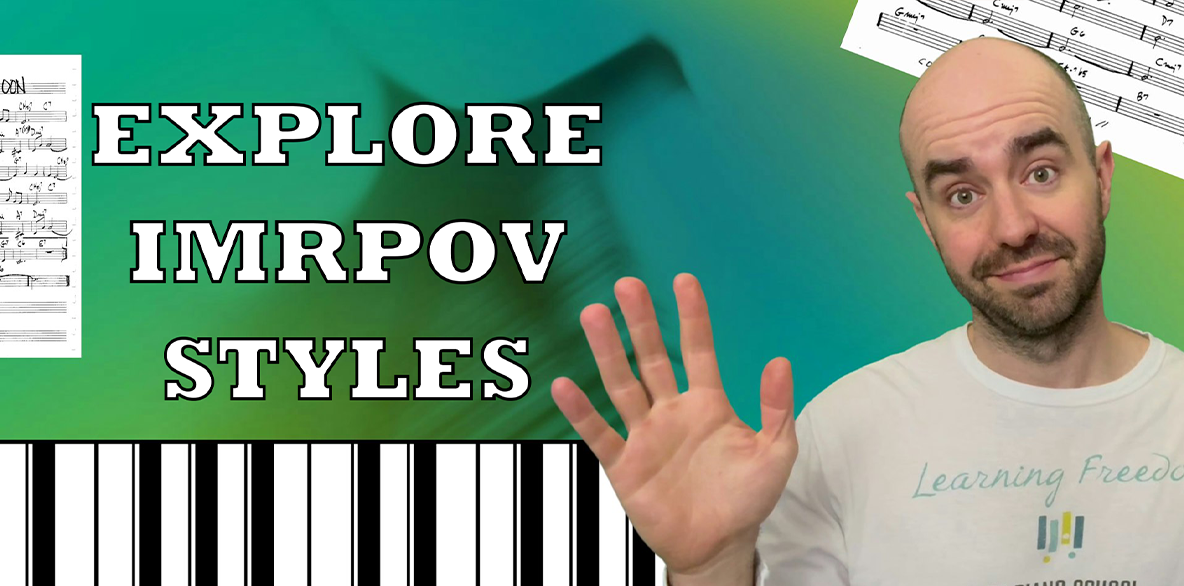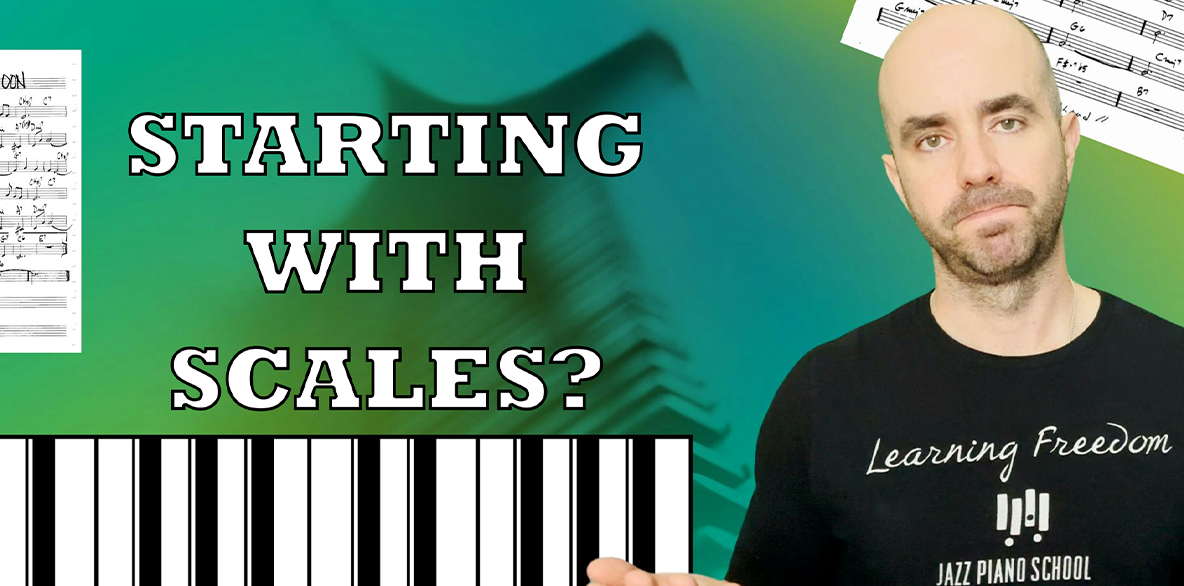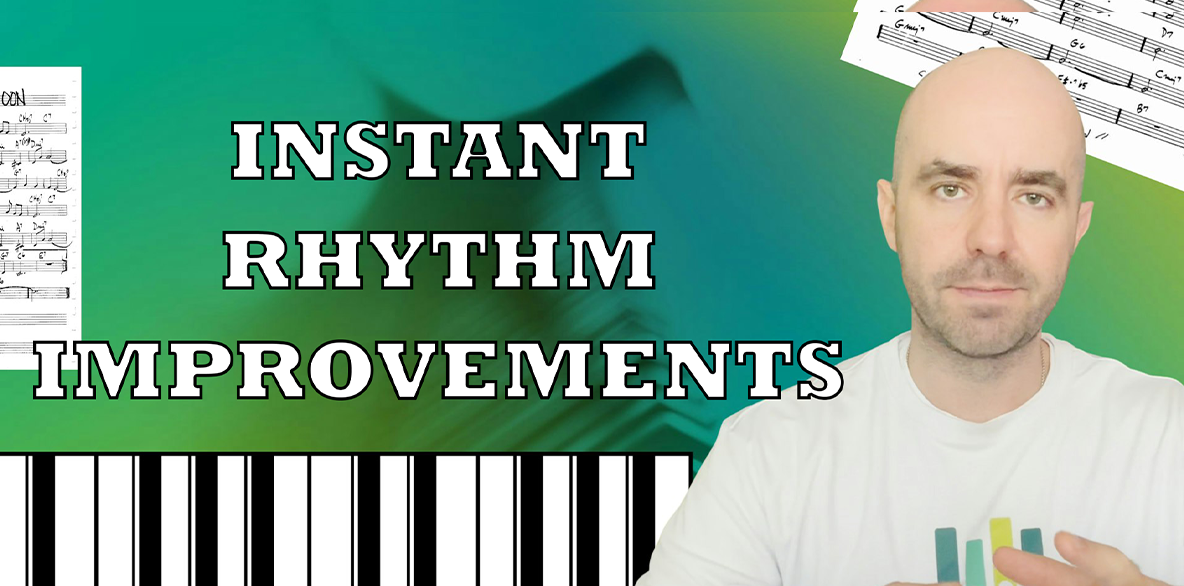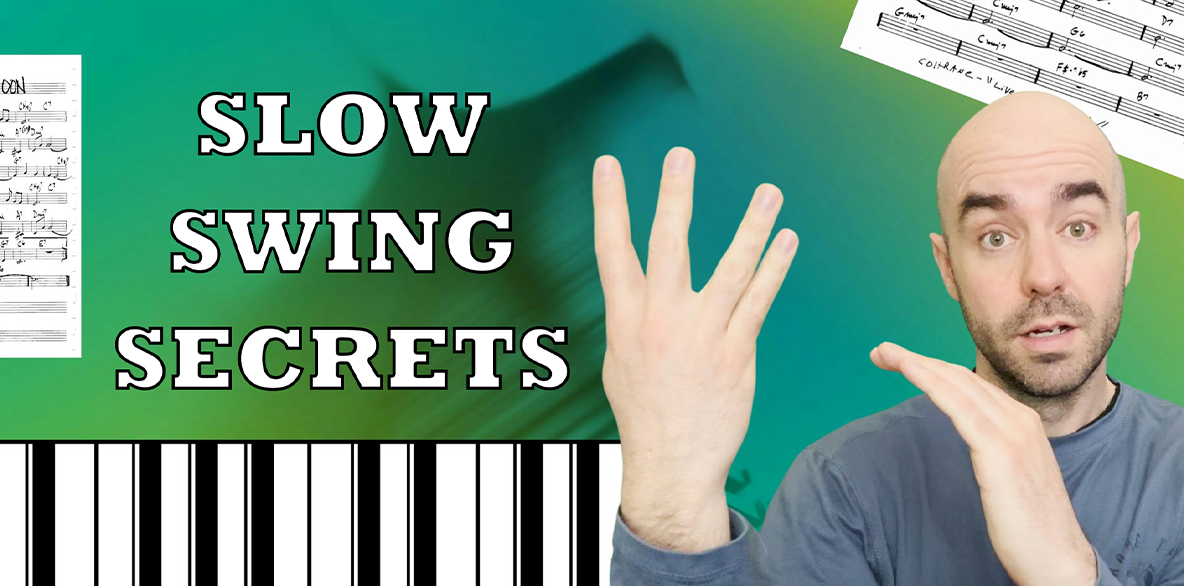Have you ever wanted to incorporate a musical idea into your playing but struggled to get past the “Copy and Paste” phase?
This process will help you internalize musical ideas and make them a part of who you are, not just a lick that you can play.
First, decide on a musical subject.
Identify a lick or pattern that intrigues you that you’d like to make your own. There are plenty to choose from on this blog that have already been transcribed for you, or you can transcribe your own. Pick a short, manageable segment over one chord progression. Remember: extreme examples might pique our interest, but they don’t make for good foundations/building blocks
Once you’ve selected your subject, it’s time to get started!
Step 1: Isolate
- Practice the line with your RH alone, then begin to add LH components such as Root, Root + 7th, Root + 3rd, 10th’s, Rootless Voicings, etc.
- Take the line through all the keys using different root movements. (Circle of 4ths, Half-steps, Major 3rds, Minor 3rds, etc.)
Step 2: Integrate
- Apply the lick to changes you are practicing. This will help you to gain control over the melodic information as well as increase fluency over the tune you are working on.
- You might have to alter the lick slightly to make it fit in different situations. This is good! It leads us to the next step…
Step 3: Individualize the subject by creating alternate versions. This can be done in many different ways limited only by your creativity. Here are 3 of my favorite!
- Take Away Notes: By putting rests in different places, your fingers will get off “autopilot” mode and become familiar with all the different intervallic possibilities contained within the phrase.
- Add/Alter Approach Notes: Identify a note in the lick that is a chord tone and substitute its preceding notes with half step below/above and chord scale below/above approach notes. Again, this breaks you out of autopilot and gets your fingers used to approaching chord tones in different ways.
- Change The Note Range while keeping the same melodic pattern. For example, if the lick starts on the 3rd, start your alternate version on the 5th and then alter each note as necessary to fit the chords. Remember: no mater how you alter the line, each note is always only a half step away from being “correct”
Once you’ve created an alternate lick, go back to step one and repeat the cycle as long as it takes for the idea to start appearing naturally in your improvisations.
Think of it like working out. It takes about 12 weeks of a dedicated workout plan for you to notice a significant visual difference in yourself. For us as jazz pianists, it can take months shedding a concept for it to finally come out naturally in an improvisatory setting. All great things take time, so don’t be frustrated when it takes some time for things to stick. All that means is what you’re doing must be significant!
WARNING: This creative process goes hand in hand with learning the “mathematical” structuring of bebop lines. Think of yourself as a painter. Learning your scales/modes and connecting bebop scales is like learning the techniques of how to paint. Developing musical subjects through the above process is like studying the subject of your paintings. Performance is putting the two together and actually painting the picture! Now go do some digging and have fun developing your own unique musical subjects!
If we are intentional about what we repeatedly do, we can practice who we want to become. And through practice, we can become who we want to be.
Written by Trent Briden
Instagram: @trent_briden












